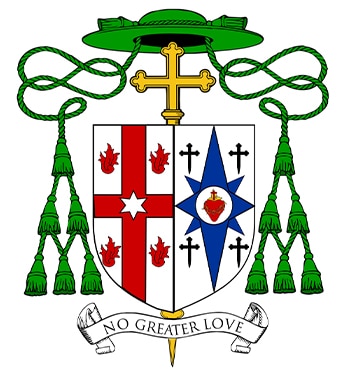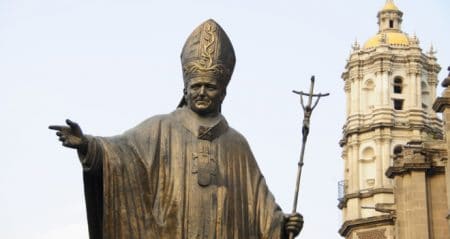The Prophetic Witness of St. John Paul II

“We, who are called to hold the Supreme Office in the Church, must manifest this fidelity with all our might and for this reason we must be a shining example both in our thinking and in our actions. This indeed must be done because we preserve intact the deposit of faith, because we make entirely our own the commands of Christ…” — Pope John Paul II, First Radio Message “Urbi et Orbi”, October 17, 1978.
The first time I really thought about Pope John Paul II was when I watched him being ripped to shreds.
Not literally, thankfully, although there was actual ripping involved. I was an Evangelical at the time, a year removed from Bible college and living in Portland, Oregon. One evening, in October 1992, my housemates and I tuned into “Saturday Night Live”, which was notable since I rarely watched television and I had little interest in watching Irish singer Sinead O’Connor perform. But I did watch, and therefore saw her take a photo of John Paul II and angrily rip into pieces while snarling, “Fight the real enemy!” O’Connor’s act caused a furor and forever altered her then-promising career.
I had been raised in a Fundamentalist home and had spent my youth mouthing the usual anti-Catholic nonsense about Catholics worshiping Mary, worshiping a piece of bread, and worshiping the Pope. In Bible college, my views began to change, in part due to reading the poetry and fiction of Catholics (Gerard Manley Hopkins and Flannery O’Connor, no relation to Sinead) and Anglo-Catholics (C.S. Lewis, T.S. Eliot, and Charles Williams). A host of other topics and questions followed, and around the same time I watched Sinead O’Connor lash out at the pope, I was also reading books on Church history and discovering the writings of the early Church Fathers.
I then began to read some of the writings of John Paul II—and I was instantly hooked. Fight the real enemy? Turns out the enemy, for me, had been a truckload of stereotypes and misrepresentations about the Catholic Church. Among the first of John Paul II’s writings I took up was Redemptoris Hominis, the first of his fourteen encyclicals. The opening sentence was something that I would not have thought, growing up, a Catholic would believe or state: “The Redeemer of man, Jesus Christ, is the centre of the universe and of history.” That encyclical presented many of the key themes of his pontificate: the centrality of Christ, the Eucharist as source and summit of the Faith, a rich and challenging anthropology, the nature and mission of the Church, the importance of Christian unity and true ecumenism, and the ultimate goal of salvation: communion with the Triune God.
What I found in the thought and witness of John Paul II was a cohesive and grand vision of the meaning of creation, life, and love. It was, of course, the Catholic vision, for the greatness of John Paul II was not found in a radical, new system of philosophy and theology, but in his ability to present the radical, transforming truths of Catholicism in a way that was profoundly biblical and patristic, traditional and modern, philosophical and theological, spiritual and personal. After entering the Church in 1997, I was able to study John Paul II’s work in a more systematic, rigorous way in pursuing a graduate degree in theology, reading all of his encyclicals, his “theology of the body,” and various apostolic letters, exhortations, and addresses.








